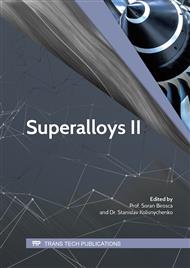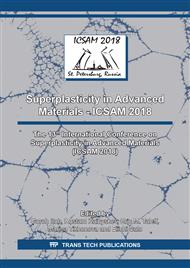p.373
p.379
p.385
p.391
p.397
p.403
p.407
p.413
p.419
Establishment of the High Temperature Constitutive Relationship of the Haynes 230 Ni-Based Superalloy
Abstract:
The high temperature flow behavior of materials is an important basis to study their formability and to determine reasonable forming process parameters. In this work, the high temperature plane strain compression (HTPSC) tests were employed to reveal the high temperature flow behavior of Haynes 230 Ni-based superalloy under the wide range of temperatures (950°C-1200°C) and strain rates (0.01/s-10/s). The stress-strain data from the tests were applied to model the strain-compensated Arrhenius physically-based constitutive equation and considering the dynamic recovery (DRV) and dynamic recrystallization (DRX) phenomenological constitutive equation. The comparison indicated that the predictions of the two modeled constitutive equations are in good agreement with the experimental data. The prediction of the flow behavior of Haynes 230 Ni-based superalloy of strain-compensated Arrhenius constitutive equation is more accurately (average absolute relative error (AARE) is 2.84%) than that of considering DRV and DRX constitutive equation (AARE is 7.57%).
Info:
Periodical:
Pages:
397-402
Citation:
Online since:
July 2018
Authors:
Price:
Сopyright:
© 2018 Trans Tech Publications Ltd. All Rights Reserved
Share:
Citation:



